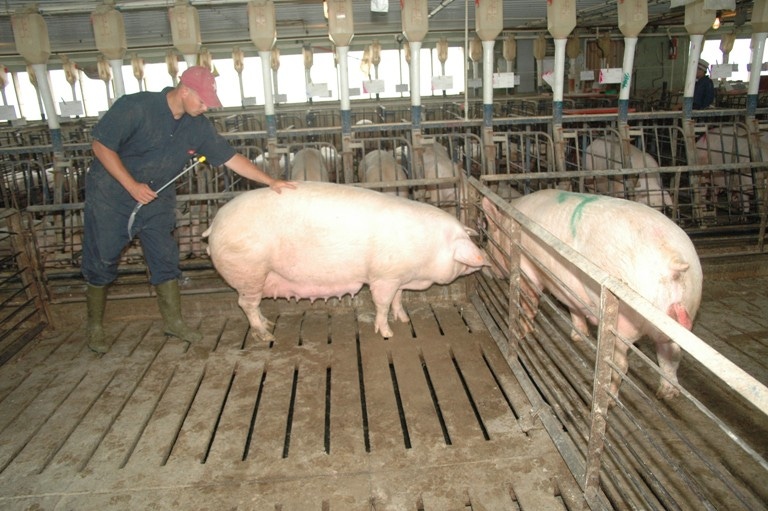Animal scientists at the University of Illinois are looking at how sperm survives in the sow oviduct.
April 24, 2013

Although U.S. cattle genetics are exported all over the world in the form of frozen semen, the same is not true for pigs because boar semen does not freeze well. In an attempt to improve semen storage and pig reproduction, animal scientists at the University of Illinois are looking at how sperm survives in the sow oviduct.
“Many mammals and birds will store sperm for some period of time,” says associate professor of animal sciences David Miller. “Pigs will store sperm for 24 to 48 hours.” Sperm must be stored in species in which mating and ovulation are poorly synchronized.
Miller and his team wanted to understand the adhesion system that retains the sperm. Previous research indicated that sugars in the oviduct were an important part of the process, but it was not clear which ones.
They screened hundreds of sugars, using an array on a microscope slide to which they added fluorescently labeled boar semen. When the semen bound to a sugar, fluorescence was visible on the slide. They identified two sugars: sialylated lactosamine and Lewis X.
The next step is to identify the receptor on the sperm.
“We’d like to know exactly which molecules the sugars bind,” Miller says. “Then maybe we could develop a laboratory test for those molecules. If sperm have a lot of them, then maybe it would be possible to inseminate only once rather than two or three times, as is typical when inseminating sows.”
He also notes that a better understanding of the storage process might also help them to determine what goes wrong when sperm are less fertile. If the problem is linked to the storage process, it might be possible to develop therapies to correct it.
Like what you're reading? Subscribe to the National Hog Farmer Weekly Wrap Up newsletter and get the latest news delivered right to your inbox every Friday!
Another question to explore is how the sugars lengthen sperm lifespan. If this could be determined, it might be possible to extend the time that semen can be stored, making it easier to ship it to other places. “If we can improve storage and transportation, we can affect pig genetics worldwide, not just within our region,” he says.
The research is described in “Porcine sperm bind to specific 6-sialylated biantennary glycans to form the oviduct reservoir” by G. Kadirvel, S.A. Machado, C. Korneli, E. Collins, P. Miller, K.N. Bess, K. Aoki, M. Tiemeyer, N. Bovin, and D.J. Miller, which was recently published in Biology of Reproduction (87(6):147). It is available online at http://www.ncbi.nlm.nih.gov/pubmed/23115267.
This research was supported by an Agriculture and Food Research Initiative Grant from the USDA National Institute of Food and Agriculture.
You might also like:
Fine-Tuned Breeding Can Boost Farrowing Results
You May Also Like


